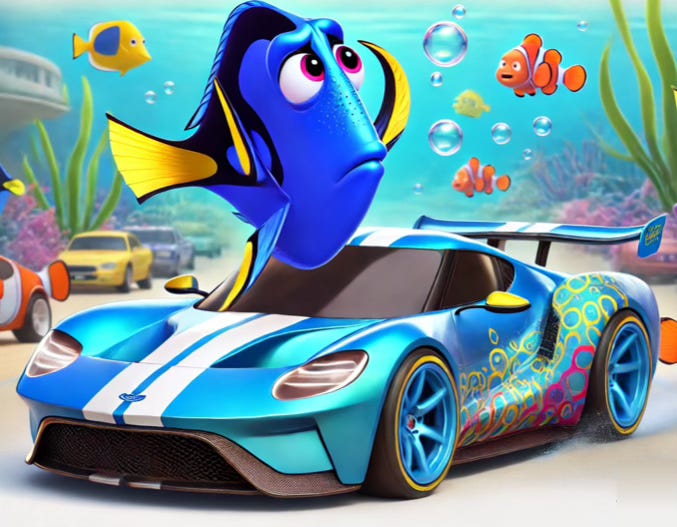Some of the best things that have ever been said in motorsport have come during an interview, or out of the mouths of commentators. For example…
Years ago, during the TV coverage of a NASCAR race, a pit reporter asked a driver who had just crashed out what happened. His response: “I got a little behind in my steering.”
A driver I raced against for a number of years, Johnny O’Connell, once said this during TV coverage of a race: “Race car drivers are minimalist. They put the least amount of input in.”
Then there’s Martin Brundle’s comment (criticism?) of a driver who had crashed out of an F1 race: “Ran out of adhesion before ambition.”
Some of these are purely entertaining, and then there are the ones that provide a lesson. One of my favorite educational responses to a media person’s question came just this year from BMW IMSA GTP driver, Connor De Phillippi during an interview at the Watkins Glen 6-Hour IMSA race: “Sometimes you need to be like Dory on Finding Nemo: just forget what happened and focus forward.”

In this case, he was referring to how he chose to respond to something negative that had happened to him and his team, but the beauty of what he said can be applied to many things that happen at the track.
Let it go.
You can’t go back and fix a missed apex or a less-than-ideal pass. This, to me, is perhaps the most important thing we learn from our time on track. Make note of a mistake, file it away so you learn from it and don’t repeat it, and get back to what’s important right now. Focus on the solution, not the problem.
One of the most common errors I see drivers of many levels make is trying to force their car onto the “ideal line.” Part of the problem is thinking about a cornering line as being “ideal,” or the best, or “what I was instructed to drive,” or just about anything else other than “what’s next.”
Picture this: You turn into your favorite corner, knowing that you’re carrying just the tiniest bit more speed than you ever have before, thinking that this is going to be a super-fast lap. As you arc your car into the turn, smoothly releasing the brakes, heading towards the apex curbing, all of a sudden, the front of the car slips a little — a touch of understeer. It’s not bad, but just enough to change the arc enough that you won’t nibble at the apex. Instead, your inside tires will pass the apex about half a car’s width from the red and white curbing. That realization occurs in micro-seconds, giving you just enough time to decide that it’s all-important to “hit your marks,” so you turn the steering wheel more. You’re trying to force your car to go where it doesn’t want to go. You feel that in the wheel, as if the front tires are being ground down by the track surface — and certainly you’re grinding your speed off. But you’re committed to not “making a mistake” of missing your apex. Your front tires take the place of the brake pads and rotors, their angle slowing your car to the point where you’re able to get down to the apex. Yay, you! You hit your marks, clipped your “ideal” apex!
Unfortunately, you’re slow because of it.
If, instead, during that micro-second phase where you realized the “ideal line” was not going to happen this lap, you allowed the car to continue to track along the arc you defined with the steering wheel at the entry to the corner, you would have kept up the momentum. Sure, your corner segment would not have been quite as fast as if you’d done everything else the same but also got the car to follow the “ideal line.” But it was much faster than if you’d forced the car onto that line by cranking in more steering angle.
Everything we do when driving on a track involves compromise. We give up a bit here to get a bit more later; we trade off some speed or corner radius there to gain more at another part of the track. Sometimes, we need to give up on a perfect line through a corner to let the car to run free through, and out of, a corner.
Strive for the perfect line, but not at the expense of scrubbing off speed to get there. Focus ahead.
If Dory could drive a car on track, she’d be very good… up to a point. I’m not suggesting you completely forget the mistakes you make. No, you need to remember your errors, learn from them, and then focus forward on what matters ahead of you.
Drive in the moment, and know that a missed apex, for example, is a past moment.
